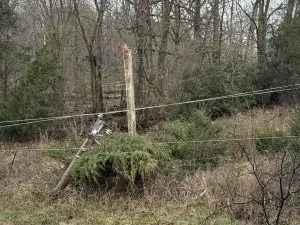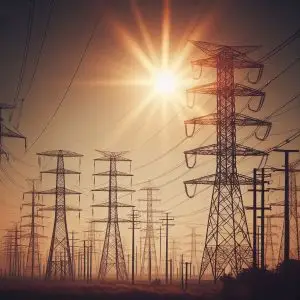
Craighead Electric Responds to Storm Damage, Restoration Efforts Underway
Jonesboro, AR. — Mar. 15, 2025 — Craighead Electric Cooperative (CECC) crews are working diligently to restore power after severe storms impacted the area, leaving
FIRST
CONFIRM the outage: Check lights and appliances in other rooms. If you still have power in some areas, most likely a fuse or a circuit breaker in your house has blown. If all lights are off, check to see if neighbor’s lights are also off. This will help us determine how widespread the outage is.
THEN
CALL 1-888-771-7772 to report the outage: Be prepared to leave a message on our Automated Outage System where your information will be fed immediately into an outage analysis computer system. Dispatchers will use this information and direct crews to the source of the problem.
OR
TEXT your outage to 85700: Text CECC to 85700 to opt-in to SMS Text Message outage notifications (required once per phone number). Then, in the event of an outage, text OUT to 85700 to instantly report your outage via text message. Give us a call if you have any issues with text notifications.
OR
Report Outage Via SmartHub: In your SmartHub App. Log-in to SmartHub in a web browser or the smartphone app, click on Report an Issue/Inquiry, then click on Power Outage, choose the account that is experiencing an outage, add any comments, and submit the outage report (preferred method).

Jonesboro, AR. — Mar. 15, 2025 — Craighead Electric Cooperative (CECC) crews are working diligently to restore power after severe storms impacted the area, leaving

Jonesboro, AR. — Jan. 8, 2025 — With winter weather approaching, Craighead Electric Cooperative Corporation (CECC) is preparing for the forecasted snowstorm expected to impact

At Craighead Electric Cooperative (CECC), we understand that our members rely on us for consistent power, especially during extreme weather conditions. However, there are times

Jonesboro, AR — April 5, 2025 — Following the severe weather systems that moved through Northeast Arkansas, Craighead Electric Cooperative Corporation (CECC) crews have been actively

Jonesboro, AR — April 3, 2025 — Craighead Electric Cooperative Corporation (CECC) personnel have been working tirelessly overnight and throughout the day to restore power following

Do you remember being overly worried about getting stuck in quicksand as a kid? It seems every other show and movie featured the trope of
